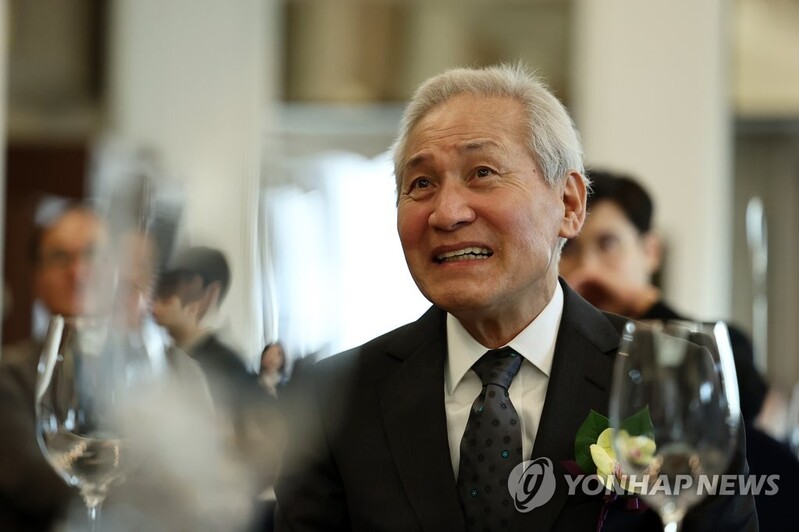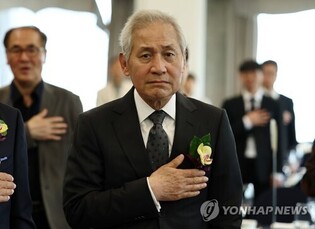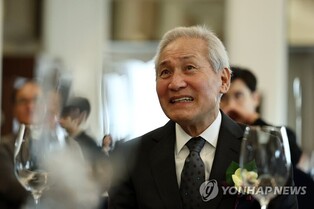*Editor’s note: K-VIBE invites experts from various K-culture sectors to share their extraordinary discovery about the Korean culture.
Choi Man-soon's Medicinal K-Food: Korean Mandu dumplings Flying High Abroad
By Choi Man-soon, Food Columnist and Director of the Korea Traditional Medicine Food Research Institute
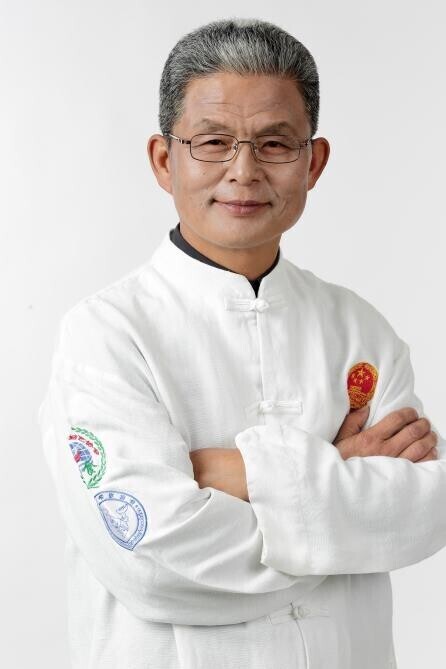
"Korean dumplings" are gaining popularity abroad.
According to the Korea Customs Service and the Korea Agro-Fisheries & Food Trade Corporation (KATI), the export weight of frozen dumplings from January to October 2024 was 17,191 tons. The export volume is expected to continue increasing. This figure excludes dumplings produced directly in overseas factories.
Korean-style dumplings are known for their strong health food image, as they typically contain more plant-based ingredients like vegetables and tofu compared to dumplings in other countries. The filling also often includes mushrooms and seafood instead of meat. In addition, they are continuously adapting to suit the tastes of various countries around the world. The dumpling skin, which used to be made from flour, has now been replaced with starch dough made from boiled water, giving it a chewy texture and a transparent, thinner appearance. These dumplings are also praised for their convenience, which attracts consumers.
For me, dumplings are like black-and-white photos.
 |
| ▲ This undated Yonhap file photo shows "mandu," or South Korean dumpling. (Yonhap) |
The image of my smiling parents and the memories that come with it are like a passage through time. When I was young, I found three pheasants in the snowfield on the sunny side of the mountain. It was the result of my father sowing soybean seeds a few days earlier. Back then, pheasants were abundant.
Pheasants were a delicacy in the winter. They especially enjoyed eating medicinal herbs like Banha and soybeans. The meat was tender, and even the bones had the effects of wild plants. Dumplings made with ground pheasant meat were considered the best. In traditional medicine, pheasant meat was believed to have a warm nature, strengthening the digestive organs and dissolving phlegm, preventing colds and asthma.
My mother would roll out the dough with a rolling pin, flattening it wide, then use a teapot lid to cut out dumpling skins.
She would finely chop the pheasant meat and lightly stir-fry it in oil. Tofu was squeezed in a hemp cloth to remove excess water, and the kimchi was stripped of its stuffing and chopped finely. After mixing everything with minced garlic, she would make the filling.
Then the whole family would gather and make dumplings together. I, as a child, would follow the method my mother used. She would say that making small holes on the edges of the dumpling skin would allow the filling to cook properly and that if you made the dumplings beautifully, you would later marry a beautiful bride.
The finished dumplings would be stored separately in a basket for the morning ritual, and then boiled in soup for the whole family to enjoy together.
For me, dumplings are a precious gift filled with family love and memories.
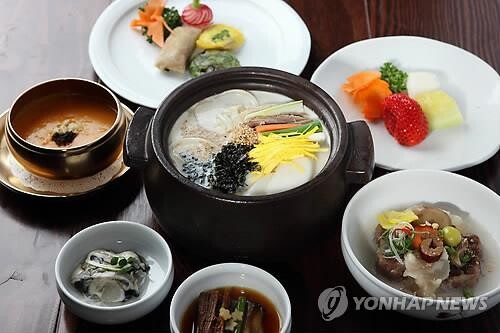 |
| ▲ This undated Yonhap file photo shows South Korean pheasant dumpling soup. (Yonhap) |
The fourth chapter of Sun Tzu's The Art of War, "Military Formation," deals with defense and the strategic handling of military situations. It provides strategic insights on how an army should maintain its formation and suppress the enemy.
If we compare this to dumplings, Sun Tzu would argue that the army must prepare a strong defense to withstand enemy attacks.
The filling of the dumpling is the core of the defense. Even if the enemy attacks, the filling must be securely wrapped to prevent it from spilling out. Additionally, preparing the dumpling filling to suit the health of the family is akin to strengthening the fundamentals of an army.
Sun Tzu also stated that an army should not be fixed in a particular formation but must adapt to the situation. The dumpling skin wraps the filling, but it must not be too thick or too thin. The thickness and flexibility of the skin should be just right to protect the filling while ensuring a delicious result. When the dumpling skin is well made, it can adapt to various cooking methods, whether steamed or fried.
Sun Tzu emphasized that the army's deployment and strategy must be adjusted according to the battlefield's situation and environment. The way dumplings are shaped follows this principle as well. Dumplings can be cooked in various ways, such as steamed, fried, or boiled, just as in war, strategies must be chosen according to the situation.
Even if the defense and formation are perfect, Sun Tzu stressed that proper execution is required to guarantee victory. Similarly, when making dumplings, if the correct temperature and time are not maintained, the result can be a failure.
When cooking fried dumplings using convenient frozen dumplings, first, heat a frying pan over high heat and then add enough oil. Then, reduce the heat to medium and place the frozen dumplings one by one in the pan. Fry the dumplings until the bottom turns golden brown. The key point here is that, without flipping the dumplings, you should pour water into the pan as you would with oil, then cover the pan with a lid. Once the water evaporates and the top of the dumplings becomes translucent, turn off the heat. Carefully transfer the dumplings to a plate without bursting them. Properly cooked fried dumplings, with a balanced exterior and interior, will maximize flavor, much like a well-executed military operation brings victory.
Lastly, Sun Tzu stated that it is important for the army to maintain individual strengths in its units while achieving overall harmony. A plate of dumplings is completed through the harmony of taste and visual beauty. War, too, is won through overall harmony and balance.
Ultimately, The Art of War's "Military Formation" emphasizes the essence of defense, flexibility, adaptability, accuracy in execution, and overall harmony. These principles naturally manifest in the process of making and cooking dumplings. The commonality between war and dumplings lies in thorough preparation, meticulous adjustments, and, ultimately, achieving harmony, which leads to true victory.
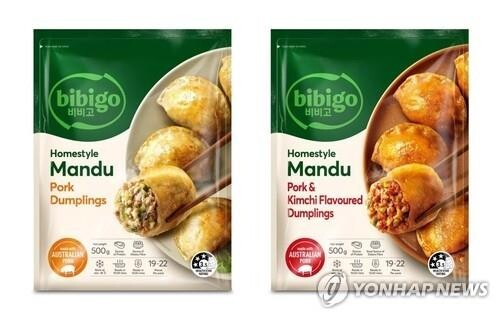 |
| ▲ 'Bibigo' dumplings sold at large supermarkets in New Zealand. (Yonhap) |
The term "mandu" (饅頭) first appears in the Yeongjeopdogam (迎接都監) rituals. Dumplings have been a popular dish, especially on New Year's Day, and are also a favorite during the cold winter months. Among them, kimchi dumplings were particularly popular.
People from regions such as Pyeongan-do, Hwanghae-do, and Gangwon-do often eat dumpling soup (mandu-guk) instead of rice cake soup (tteokguk) on New Year's Day. In China, there is also a custom of eating dumpling soup during the Lunar New Year. In China, there was a type of silver coin shaped like a horseshoe called "majeun" (馬蹄銀), and during the first month of the year, dumplings were made in the shape of these coins, symbolizing a wish for wealth in the new year.
Korean dumplings can be categorized into various types based on cooking methods, such as steamed dumplings, fried dumplings, boiled dumplings, and dumpling soup. Dumplings also come in various shapes, such as ear-shaped dumplings, round dumplings, "gyu-asang" (a type of small dumpling), "byeong-si" (spoon-shaped), and "seongnyo-tang" (flower-shaped dumplings).
Among these, "gyu-asang" is a dish that was once prepared in the royal court, made with folds resembling the shape of a sea cucumber, and was also known as "mi-mandu." "Byeong-si" is similar to today's dumpling soup, where the dumpling shape is created by folding a round dumpling skin in half without forming wrinkles, making a crescent shape, and then boiling it in soup. "Seongnyo-tang," named for its resemblance to pomegranates, was also a dish prepared only in the royal court. There were also dumplings made without flour dough, using fish, meat, or vegetables to wrap the filling.
Eomandu, or fish dumplings, are made by placing the filling inside fish skin, while pheasant and mackerel dumplings are made by finely chopping the fish and forming them into round shapes, then coating them with starch to make rolling dumplings.
In the royal banquet records, there are mentions of various types of dumplings, such as raw pheasant dumplings (saengchi), raw sea bass dumplings (saengbok), pickled chicken dumplings (jingye), and raw clam dumplings (saenghap). The Iseunrok (二旬錄) records that "King Injo liked abalone dumplings, and on his birthday, the prince, along with the queen, personally made dumplings in the Eastern Palace and delivered them early in the morning."
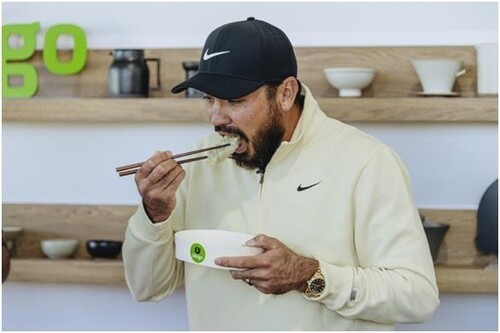 |
| ▲ This undated Yonhap file photo shows golfer Jason Day eating South Korean mandu, or dumplings. (Yonhap) |
Like rice cakes and fried foods, dumplings have been a favorite food for Koreans. Dumplings first appear in records during the Goryeo Dynasty, and their preparation methods developed further during the Joseon Dynasty.
In the Goryeo Dynasty, dumplings were mainly made with wheat flour or buckwheat flour, and during the Joseon Dynasty, corn flour was also used. Dumpling fillings varied, including meat, fish, vegetables, bean sprouts, and tofu.
Among these, the method of making dumplings with buckwheat, known as a local dish from Gangwon-do, is described in detail in the Eumsikdimibang, which is quite interesting.
First, buckwheat flour is mixed with boiling water to make the dough. The fillings can include pork, chicken, beef, or pheasant. Vegetables such as water parsley, bean sprouts, and radish are blanched, and kimchi and meat are finely chopped. The vegetables and tofu are seasoned with ginger, garlic, chili powder, sesame seeds, and oil, and then mixed together. The dough is rolled thin, and pine nuts are placed inside to form the filling. The dumplings are placed in boiling broth, and once they float to the surface, they are removed and sprinkled with black pepper. The dish is served with a dipping sauce made of soy sauce and chili powder.
Today, Korean dumplings have become a popular healthy food worldwide as "K-mandu" and proudly represent a sector of "K-food."
(C) Yonhap News Agency. All Rights Reserved
























![[가요소식] 베이비몬스터, 첫 북미 투어 다큐 공개](/news/data/20260102/yna1065624915971209_797_h2.jpg)






